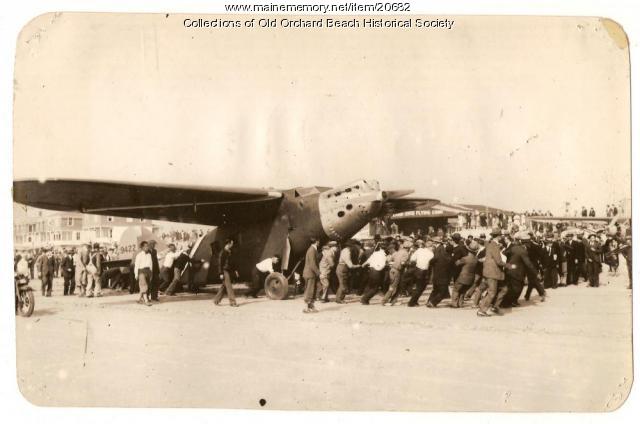Keywords: Military Societies
Item 7326
Letter concerning military provisions and garrison contingents, Kittery, 1695
Contributed by: Maine Historical Society Date: circa 1694 Location: Kittery Media: Ink on paper
Item 98862
Medal, Brigade de Volontaires Franco-Américains, 1910
Contributed by: Franco-American Collection, University of Southern Maine Libraries Date: 1910 Location: Biddeford; Manchester Media: Brass
Item 151684
Contributed by: Maine Historical Society Date: 1940 Location: Rumford Client: State of Maine Military Defence Commission Architect: John Calvin Stevens and John Howard Stevens Architects
Item 151093
Rebuilding Armory State Military Defense Commision, Portland, 1946-1947
Contributed by: Maine Historical Society Date: 1946–1947 Location: Portland Client: United States Government Architect: John Howard Stevens John Calvin Stevens II Architects
Exhibit
Music in Maine - Military Marching Bands
"… Town bands carried on the marching tradition of military bands after the Civil War, with uniforms often resembling the original military style."
Exhibit
George F. Shepley: Lawyer, Soldier, Administrator
George F. Shepley of Portland had achieved renown as a lawyer and as U.S. Attorney for Maine when, at age 42 he formed the 12th Maine Infantry and went off to war. Shepley became military governor of Louisiana early in 1862 and remained in the military for the duration of the war.
Site Page
View collections, facts, and contact information for this Contributing Partner.
Site Page
Old Orchard Beach Historical Society
View collections, facts, and contact information for this Contributing Partner.
Story
Service in Bosnia, Iraq and Afghanistan by MAJ Adam R. Cote
by Adam R. Cote
Military Service has had a deep impact my life
Story
How the first chapter Veterans for Peace was founded in Maine
by Doug Rawlings
Veterans for Peace was founded in Maine and is now an international movement
Lesson Plan
World War I Sacrifice and Protest
Grade Level: 9-12
Content Area: Social Studies
Learn about World War I using primary sources from Maine Memory Network and the Library of Congress.
Lesson Plan
World War I and the U.S. Home Front
Grade Level: 9-12
Content Area: Social Studies
Learn about World War I using primary sources from Maine Memory Network and the Library of Congress.



















